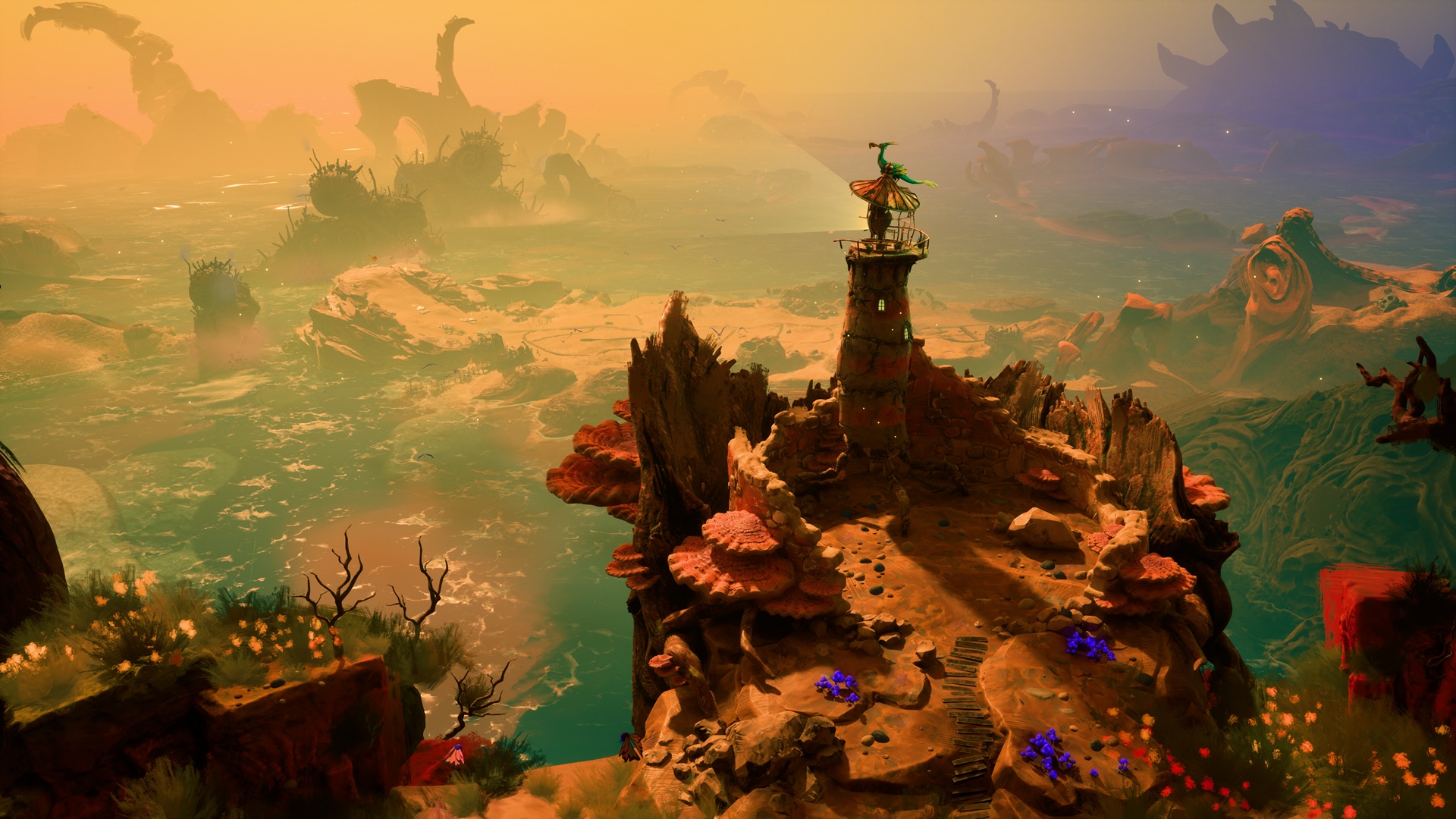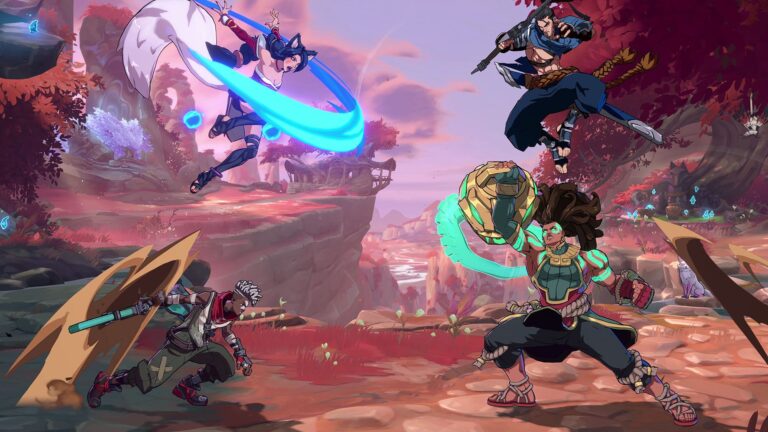
Storybook fables that teach grander lessons about life can come in many different forms. They might feature humans, animals with human qualities, or tales of friendship—maybe between humans or talking animals. However, it’s not often that there’s a poignant yarn about a lighthouse and a bird.
The premise of *Keeper*, the latest puzzle-filled adventure game from Double Fine, suggests an oddball, almost wacky kind of friendship story. Yet, it ends up being a grander tale about life, time, and nature, harboring a surprising amount of emotional depth for a story centered on a lighthouse.
## Turn On the Light
Sometimes, it’s difficult to fully convey what makes a game like *Keeper* such a grand adventure without delving into light spoilers. While I’ll try to keep things vague, some discussion of later sections is unavoidable. Please keep that in mind as the review progresses.
*Keeper*’s story takes place in a distant future where humans have long since died out. A remote island is under threat from a dark force known as the Wither. After years of inactivity and wear, a lighthouse topples over—but then, unexpectedly, it sprouts a pair of legs and begins walking.
As the lighthouse moves, a curious bird named Twig flies by and decides to nest atop its peak. The lighthouse can only move forward, and over time, Twig helps out on its journey, developing a strange bond with this seemingly inanimate companion.
## Minimalistic Storytelling That Resonates
A story like *Keeper*’s could have easily fallen apart under heavy exposition. There could have been full-blown cutscenes explaining what the Wither is, how long it has existed, or why the lighthouse suddenly came to life. Instead, Double Fine adopts a minimalistic storytelling approach.
There’s no dialogue; story beats unfold through short cutscenes filled with simple actions and gestures. Players are encouraged to use their imagination to interpret what’s happening—and why.
This subtle narrative approach makes the story resonate all the more. The lighthouse’s awakening and journey can be seen as a metaphor for life itself. It undergoes several phases, starting with adjusting to its new legs, reminiscent of a baby’s first steps. As time passes and the story unfolds, the lighthouse ages, its body slowly falling apart yet transitioning into new forms and purposes, much like human aging and transformation.
Without spoiling the ending, it’s a beautiful conclusion that invites reflection on the nature of existence and what comes next.
## The Tale of Twig
Life and friendship are also embodied by Twig. Starting the game as a curious creature, Twig sees the walking tower as a friend—even though it looks nothing like her. As the story progresses, Twig advances through her own stages of life, with the lighthouse at her side.
Again, without spoiling the story’s conclusion, Twig’s journey ends beautifully, symbolizing a personal fulfillment that was unexpected at the beginning.
## Exploring Nature and Survival
While the beginning and end of *Keeper* pose grand philosophical questions, the middle portion focuses more on elements of nature working together for survival. Even without humanity, the remaining life forms fight to keep the world alive and thriving.
One particular section prior to the game’s climax illustrates this idea beautifully—one of the strongest examples of Double Fine’s minimalistic storytelling at work.
## Shining a Spotlight on Gameplay
*Keeper* features no explicit objectives throughout its length, which is sometimes for the best. The visual beauty of the natural world and the wonder of player actions would suffer with intrusive text. Brief objective prompts appear only if players get stuck.
That said, locating the next puzzle isn’t always straightforward. There were moments when I wandered in circles, unsure where to proceed—especially during a later section involving navigating the island’s waterways.
*Keeper*’s storytelling largely feeds its gameplay, making both feel all the more fulfilling. The lighthouse’s movement begins awkwardly, as it learns to walk on land without toppling—much like a baby taking first steps. Because it’s top-heavy, players must master the physics to navigate.
As the lighthouse takes on new forms with story progression, movement becomes easier, akin to reaching adulthood.
Puzzles often involve using the lighthouse’s bulb to shine light on darkened objects, raising platforms or opening doors to clear paths. The light also wards off the Wither’s darkness, which is more a nuisance than a lethal threat.
*Keeper* has no fail states or death, so there’s no pressure to solve puzzles quickly or worry about the Wither’s darkness obstructing progress—it merely slows you down.
Twig, too, plays a role in puzzles—retrieving objects, turning cranks, or weighing down switches. The game uses a sparkling light to indicate where Twig can go, making efficient use of limited on-screen space.
## A Clever Twist on Time Manipulation
One particularly notable section had me viewing *Keeper* as a grand metaphor. To revive a dilapidated robot, the lighthouse must explore three temples representing the past, present, and future.
In the past temple, shining the light on the symbol turns Twig into an egg, adding weight to pressure switches. In the future temple, Twig becomes a ghost, able to pass through walls.
Manipulating time and Twig’s temporal state forms one of the most clever puzzle ideas in the game. This sequence, however, ends too quickly—I would have loved to see more of these concepts explored.
## The Climactic Wild Ride
Another memorable section arrives at the story’s climax. Without spoiling plot details, the gameplay shifts from the earlier walking simulator to a boating segment, then suddenly transforms into a high-speed, momentum-based ride through tunnels reminiscent of *Marble Madness*.
This exhilarating section is a blast and brief enough not to wear out its welcome, setting the stage perfectly for the story’s emotional finale.
## Immersive Visuals and Camera Work
Double Fine makes full use of *Keeper*’s settings, encouraging players to soak in the surroundings. This is partly why there’s no dedicated camera control.
The camera’s cinematic placements—corner shots, bird’s-eye views, and vantage points from underneath the landscape—enhance the natural beauty of the world.
However, this fixed camera can sometimes introduce unnecessary challenges when solving certain puzzles, as players can’t adjust their viewpoint freely.
## Friendship Takes New Forms
*Keeper* is a beautiful story about life and friendship. It could easily have been told as a powerful animated feature but truly shines as a video game, where its unique puzzle design and narrative pacing come alive.
Double Fine continues to showcase its ability to deliver diverse gaming experiences, and *Keeper* stands apart as something entirely different from anything the developer has produced before.
If you’re in the mood to contemplate the nature of the universe, *Keeper* is a story well worth experiencing.
It’s hard to imagine that a living lighthouse could evoke such emotion—but that’s exactly what makes this game a true Keeper.
https://www.shacknews.com/article/146369/keeper-review-score


